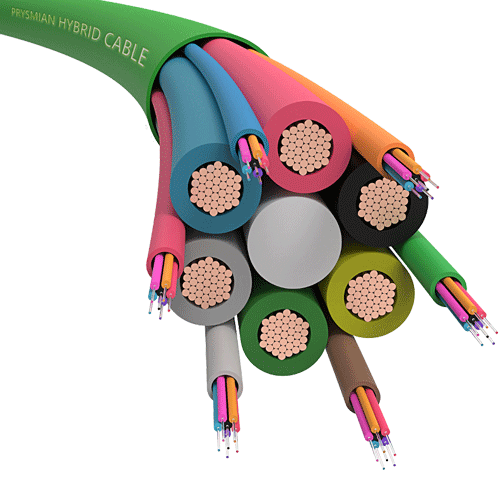SiroccoHYBRID optical and power cables for blown applications

Home office, online schooling, and increased levels of video streaming during the Covid-19 pandemic have led to a significant rise in internet data traffic. Increased digitalization means data volumes will continue to rise. High-performance, reliable optical networks with edge resources and access points closer to the end users will be able to reduce the risk of data bottlenecks in the future. The breaking point for many cities and communities when expanding their networks is cost. Existing ducts often does not have much space left. Optical cables that can be deployed in limited space available in ducts can reduce civil works and increase in costs and disruptions. In addition, the onset of 5G and IoT is driving the need for remote devices and antennas. This brings another challenge to network operators, as these devices in remote locations need to be connected to both power and optical fibre. With the power requirement especially, the remote location of these devices poses a difficult question of how to deliver the power, as local power sources for every device would be hugely expensive, disruptive, and logistically difficult. To simplify the deployment of access points and edge devices, Prysmian has recently developed an extremely compact and bendable optical fibre and copper cable, SiroccoHYBRID, for fast installation in microducts.
SiroccoHYBRID cable with a diameter of 7.7 mm can be installed by blowing into 10 mm inner diameter microducts. 10mm microducts are commonly used for access networks in many European and North America locations. By benefitting from existing infrastructure and low installation costs without the need for digging, it features six copper cores with a cross section area of 1 mm2, and up to 36 BendBright XS (ITU-T G.657.A2) optical fibres. The cable can be blown up to 1 km at high speed (40 m/min). The following schematic indicates the main electrical and geometry features of SiroccoHYBRID.
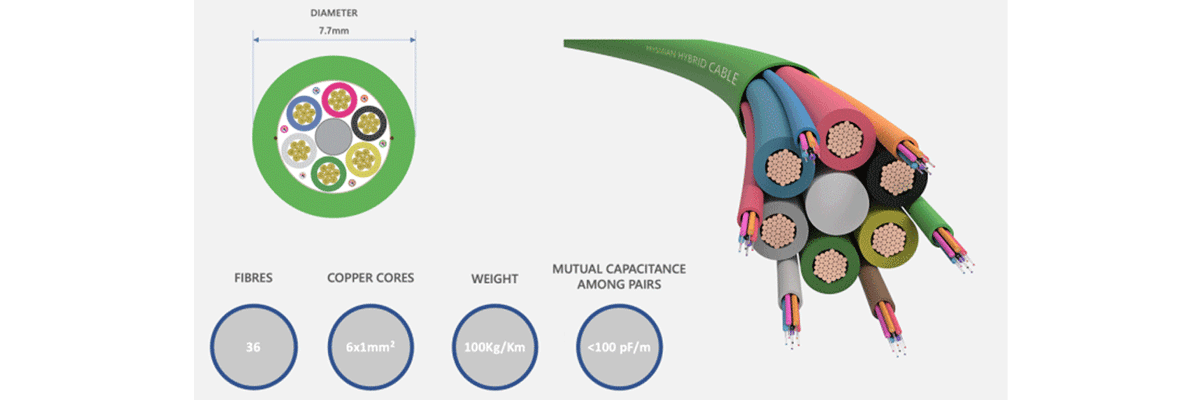
In order to achieve 1000m blowing distance into a 10mm microduct, SiroccoHYBRID has a small cross-sectional area and incorporate innovative flexible copper conductors and reduced diameter fibre modules. SiroccoHYBRID has been successfully deployed in outdoor and indoor networks, see picture.
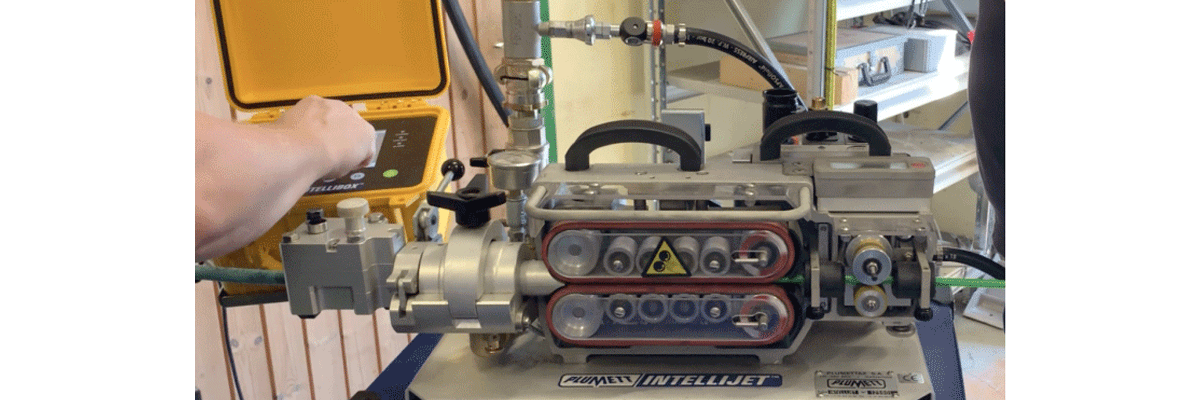
In addition, novel methods of transmitting electrical power, that can be categorized as class 4, are emerging allowing to handle 300 VDC safely. These technologies are typically based on transmitting energy in packets and controlling continuously the line for integrity allowing to mix energy and fibre over a single hybrid cable. That makes possible to deliver up to 1500 watts over 300 m. In the graph below, it is reported the power delivered versus the distance for the SiroccoHYBRID microduct optical cable.
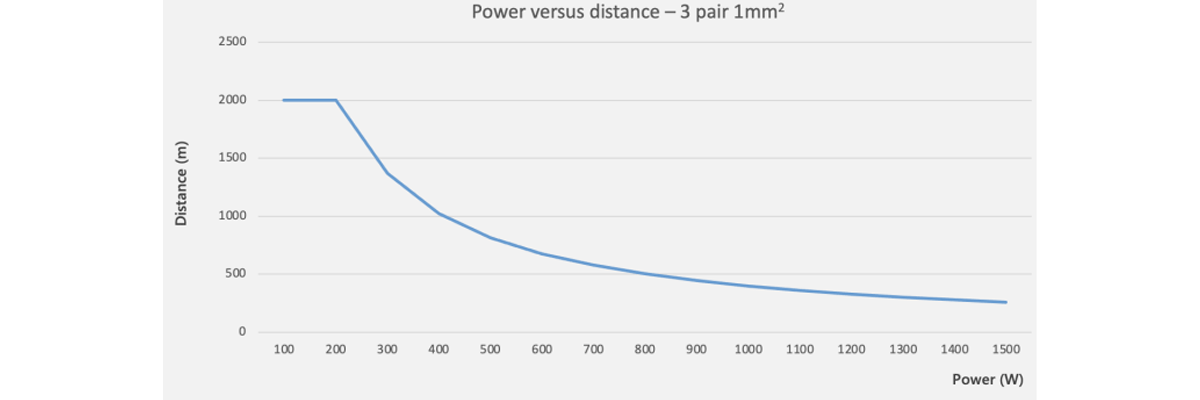
Small cells for 4G/5G mobile services should be installed in very specific locations, as outlined by radio planning but delivering power and fibre to a large number of locations can be prohibitively expensive. SiroccoHYBRID microduct cables and novel power transmission methods allow network operators to safely power remote radios from a central location. By utilizing available space in the duct infrastructure built for access networks, telecom operators can now carry both power and connectivity through a single cable. As a result, small cells and edge devices can be installed faster with reduced cost, offering the ability to concentrate battery backups to a single point. The diagram below provides an example of remote powering of small cells, Wi-Fi, CTTV and edge devices using SiroccoHYBRID.
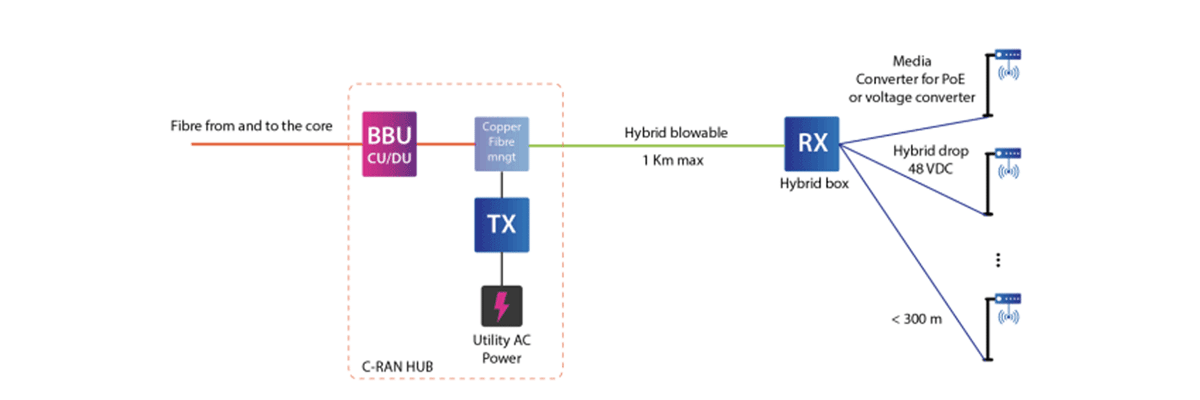
SiroccoHYBRID open up new opportunities beyond 4G/5G densification and edge devices, covering CCTV cameras, DAS, Wi-Fi networks and sensing in metropolitan outdoor and indoor environments.





